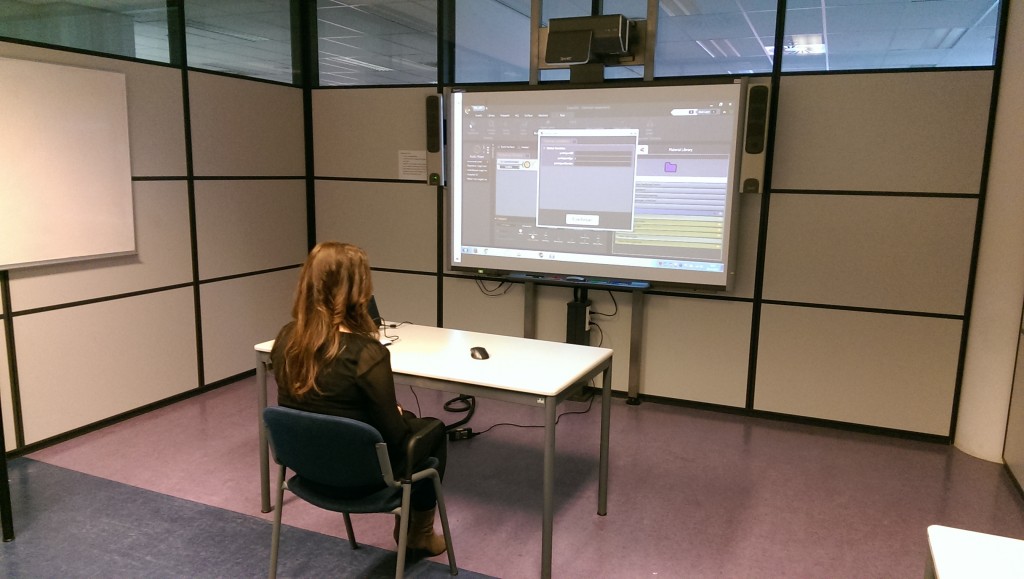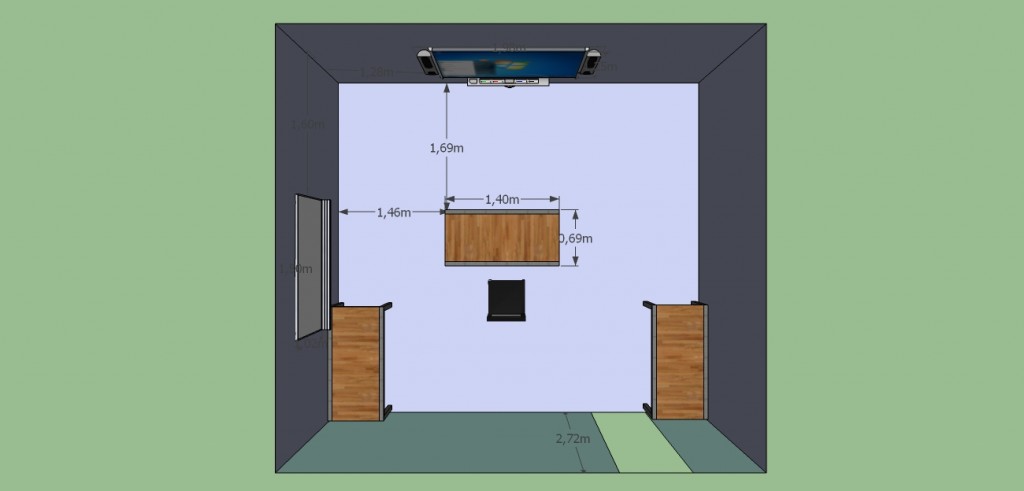Now that the research goal is clear, the stimuli are collected and the methods are clear and integrated in the EventIDE experiment it was time to look for participants. We needed at least 30 participants equally divided between men and women. Avans Hogeschool has thousands of students and staff so we didn’t expect that to be a problem. The students wrote an inviting message on a digital notice board asking people to participate but only got two reactions. Enter the next strategy: walking up to anyone they met and just ask them to take part. That worked a lot better and most of the participants were recruited in this way. Some of the classmates were invited through text messages as well. In the end 33 participants took part, a mixture of students and staff.
The students arranged the lab set-up and together we determined the protocol. The lab was a small classroom with a smart board with speakers. The students cleared most of the room, leaving it clutter free. The table was installed at a distance of 250 cm from the smart board. The projection was 154 x 108 cm. For the record I checked the sound levels of the different sets in the lab set-up with my decibel meter. They might have a strong influence so it is good to know at what average levels the sounds were played.
The sound level during the baseline measurement (no sounds were played) was 33 decibel. The autumn set with repetitive bird sounds 47 decibel, deflecting vistas with birds and running water sounds 43 decibel, hospital interiors with hospital waiting room sounds 48 decibel, standard preferred landscape with running water sounds 48 decibel and abstract landscape paintings with melodious bird songs 56 decibel.
The students lead the experiment, I came for the first couple of trials to taste the atmosphere and give some tips. At arrival people were welcomed and asked to turn off their phones. We also asked if they’d been to the bathroom. Because we use quite a lot of running water sounds and the experiment lasts around 20 minutes this might become an issue for people. We didn’t want them to get distracted because they needed to go to the bathroom and couldn’t. The sensor was placed on the earlobe. Participants were explained the course of the experiment and told that all data was anonymous and that they could leave at any time should they feel the need to end the experiment.
Participant id, age and gender were entered by the experiment leaders and then the participants were left alone with the stimuli and the questions.
As soon as the experiment was over the leaders would enter the lab for removal of the sensor and debriefing. Most participants were enthusiastic about the experiment and agreed to take part in the next experiment.
The next step is analysing the data, I can’t wait for the results!

